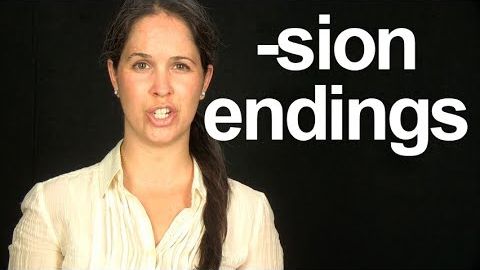アメリカ英語の「-SION」の語尾の言い方 アメリカ英語の発音 (How to Say the -SION ending! American English Pronunciation)
Sam が 2021 年 01 月 14 日 に投稿  この条件に一致する単語はありません
この条件に一致する単語はありませんUS /prəˌnʌnsiˈeʃən/
・
UK /prəˌnʌnsiˈeɪʃn/
- n. (c./u.)発音;正確な発音;発音の仕方;発音ガイド
- v.t.飲み物などを注ぐ;チップをあげる;密告する;傾ける;傾ける;ちょっと触る
- n.先端;チップ;ヒント;ごみ捨て場;汚れた場所;秘訣
US /pəˈzɪʃən/
・
UK /pəˈzɪʃn/
- n. (c./u.)見解 : 態度;位置;(スポーツの)位置 : ポジション;役職;状況 : 情勢;有利な立場
- v.t.位置づける : 置く;置く
US /ˈvɚʒən, -ʃən/
・
UK /ˈvə:ʃən/
エネルギーを使用
すべての単語を解除
発音・解説・フィルター機能を解除
